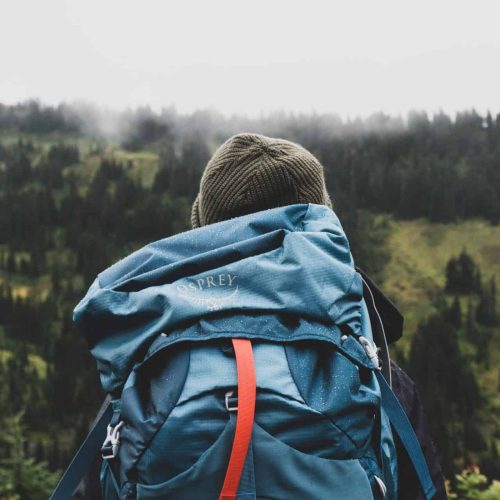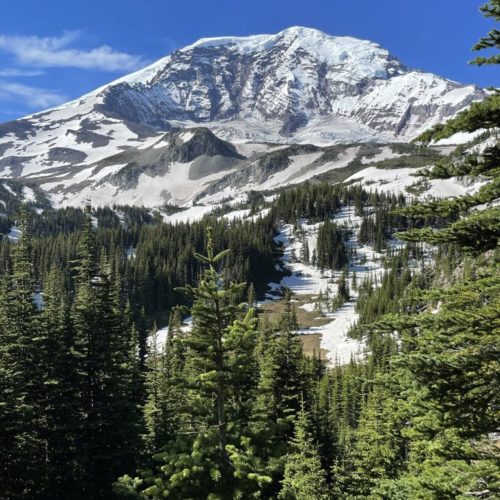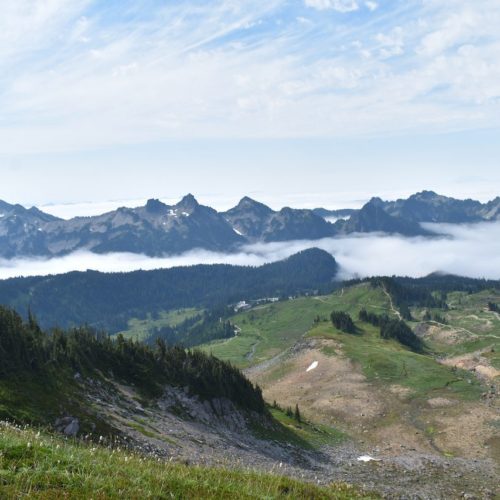Mt Rainier National Park Guide
Pierce County, Washington
Quick Links
About Mt Rainier National Park:
Established in 1899 and home to some of the largest glaciers in the lower 48 states, Mt Rainier national park is a gem in our park system. Featuring Mt Rainier itself, being the highest point in the Cascade Mountain range, you can get amazing views of this ACTIVE stratovolcano from the hundreds of miles of hiking trails. This park is busting at the seams with incredible views of glaciers, sub-alpine meadows, and massive evergreen forests. When hiking through this park, you can encounter several different biomes and hundreds of ecosystems.
Since Mount Rainier is centrally located in the park, there are no roadways you can take to get you from one end of the park to another. So if you want to get from one part of the park to another other than hiking you have to drive around Rainier. The park has four major campgrounds with a visitors center on each of its edges. They consist of Longmire Southwest, Ohanapecosh Southeast, Sunrise Northeast, Mowich Lake Northwest. This makes it essential to know what hikes you want to do before embarking on your trip. Not knowing can lead to many extra hours of needless driving.
Wildlife In Mt Rainier National Park:
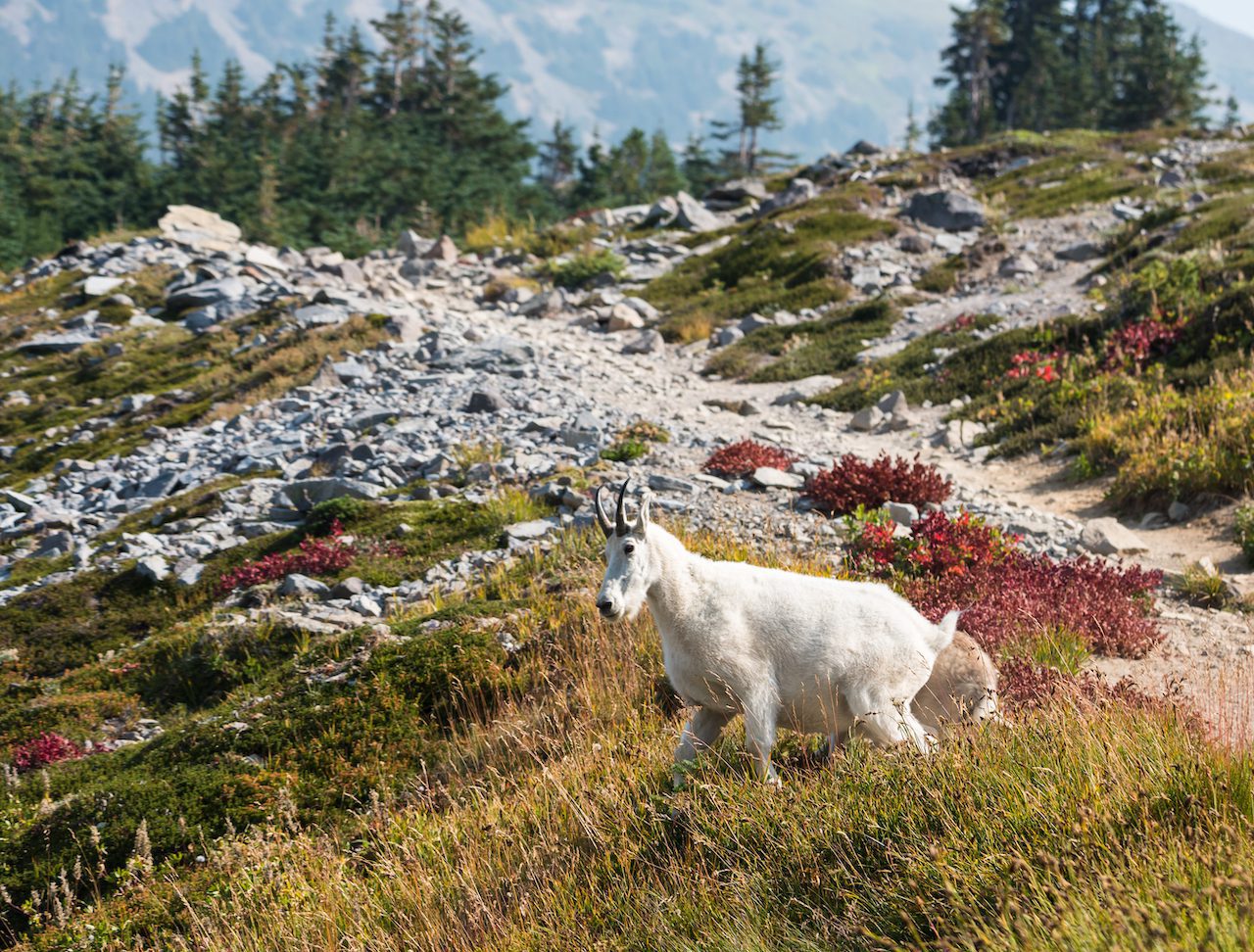
Mt Rainier National Park is home to many wildlife, including the black bear, bobcat, mountain lion, elk, and mountain goat. With any luck, you may run into one of these magnificent creatures on your journey. As always, make sure you take the proper precautions if you encounter one of these creatures. Keep your distance, store your food correctly, and DO NOT feed the animals!
Hiking & Camping Mt Rainier National Park:
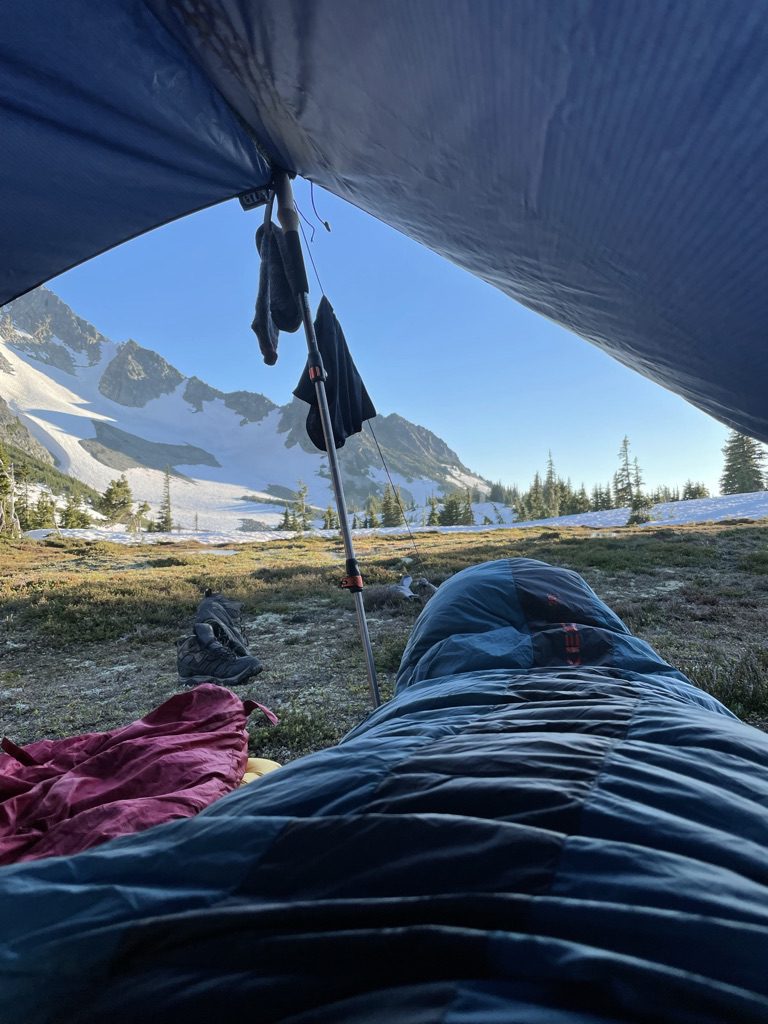
Mt Rainier National Park has over 250 miles of well-maintained trails including the famous Wonderland Trail which encircles Mt Rainier. These trails are found on all sides of Mt Rainier’s magnificent glaciers offer great views wherever you go. If you plan on going backpacking in the park having the right gear is absolutely essential snow gear such as ice axes and crampons may be needed as well depending on what time of year your go. You can see some of our backpacking gear recommendations on backpacking gear guide.
The park is also great for families or people looking for a vacation of day hikes and car camping. With over 400 available campgrounds there are many options to choose from, but I would beware, these sites can book up quickly in the busy season. As I mentioned it can be difficult to travel to each part of the park so I recommend having a planned itinerary before setting out on your Mt Rainier adventure, use our backpacking and day hike sections to guide you!
Campgrounds At Mt Rainier National Park:
The four major front-country campgrounds in Mt Rainier National Park are as follows:
Cougar Rock Campground:
- Locate on in the Southwest portion of the park
- The season is late May to late September
- 173 campsites $20.00 reservation fee (6 people max)
- 5 group campsites $60.00 reservation fee
- Potable water available
- Flush toilets available for use
- Fires permitted in fire rings
- Maximum 14 consecutive days at a campsite permitted
- Reservations accepted
Ohanapecosh Campground:
- Locate on in the Southeast portion of the park
- The season is late May to late September
- 188 campsites $20.00 reservation fee (6 people max)
- 2 group campsites $60.00 reservation fee
- Potable water available
- Flush toilets available for use
- Fires permitted in fire rings
- Maximum 14 consecutive days at a campsite permitted
- Reservations accepted
White River Campground:
- Locate on in the Northeast portion of the park
- Season is late June to late September
- 112 campsites $20.00 reservation fee (6 people max)
- No group campsites available
- Potable water available
- Flush toilets available for use
- Fires permitted in fire rings
- Reservations are not accepted campsites are first come first serve basis only.
Mowich Lake Campground:
- Locate on in the Northwest portion of the park
- The season is early July to early October
- 13 campsites (primitive sites)
- No group campsites available
- No potable water is available
- Vault toilets available for use
- Fires prohibited
- Reservations are not accepted campsites available on a first come first serve basis only.
How Much Does It Cost To Enter Mt Rainier National Park?
Prices and fees per Mt Rainier National Park Website.
- Annual Fee: $55.00
- Car Fee: $30.00 fee is good for unlimited entries for seven consecutive days.
- Motorcycle Fee: $25.00 fee good for unlimited entries for seven consecutive days.
- Per Person Fee: $15.00 for walk-ups or cyclists. Good for unlimited entries for seven consecutive days.
- Campground Fee: $20.00 a night
- Group Campground Fee (25-40 people): $60.00 a night
- Entry free with America The Beautiful Pass
***Free Days***
For those of you deal hunters out there, Mt Rainier National Park offers free entry on the below days.
- January 18th: Martin Luther King’s Birthday
- April 17th: First day of National Park Week
- August 4th: Anniversary of the Great American Outdoor Act
- August 25: National Park Service Birthday
- September 25th: National Public Lands Day
- November 11th: Veterans Day
When Is The Best Time To Visit Mt Rainier National Park?
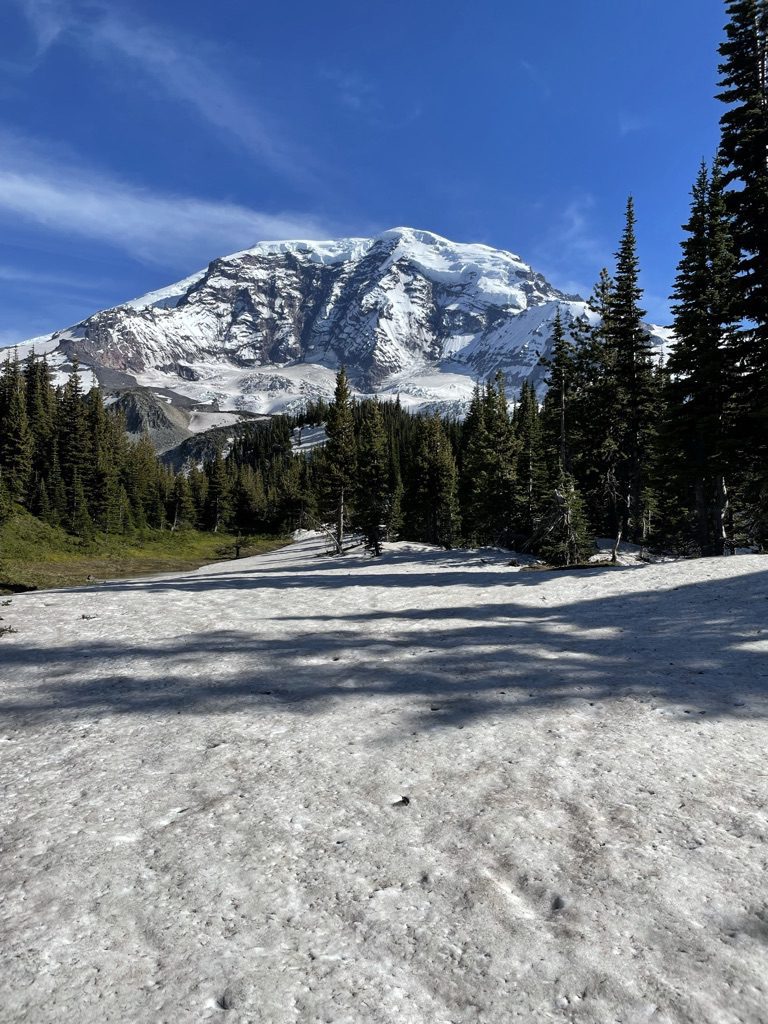
Mount Rainier National Park has many areas at high elevations, combined with the heavy snow season, which makes the timing for your trip of the utmost importance. The best time of year to visit for hiking and backpacking purposes would be from mid-July to early September.
Although mid-July seems a bit late in the season for a backpacking trip anytime before this you will likely find the trails covered in snow like above. I wish this was something I knew about before my trip to Mt Rainier which was in mid-June where half the trails we hiked were completely covered in snow requiring GPS navigation, crampons, and ice axes!
Now, I say this with the caveat that weather changes from year to year. Some years the park can have significantly more snowfall than others, so it is vital to watch weather conditions closely when planning your trip.
Can You Bring Dogs Hiking In Mt Rainier National Park?
No.
Hiking on any trails or in the wilderness with any pet is prohibited in Mount Rainier National Park. Pets are permitted to enter the park but only on paved roads or front-country campsites. You can read more about the park’s pet policy on their website.

